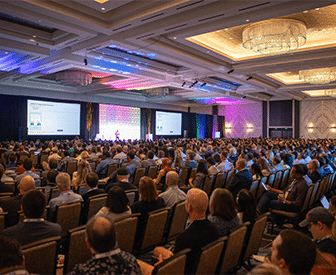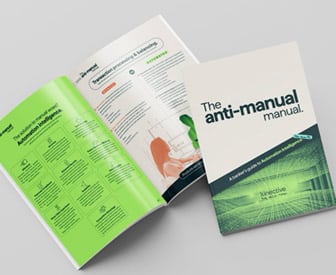Fintech firms and bigtech organizations are capturing more and more of the banking value chain, providing services such as payments, checking and even savings accounts that could erode much of the traditional bank revenues in the foreseeable future. These new entrants pose a threat to banks by raising service expectations and coming between banks and their customers.
The response goes far beyond closing branches, improving online and mobile banking offerings or making current products and services “more digital.” Instead, banks need to move further into the daily lives of customers, providing assistance before, during and after the financial transaction.
Customer behaviors and expectations are quickly adjusting to a world where products and services are recommended based on past behaviors and where location-based offers are provided instantaneously on their mobile device. Customers don’t want to go to branches or do banking. They want financial information and the ability to transact fingertip-ready.

The Power of Localized Marketing in Financial Services
Learn how to enhance your brand’s local visibility, generate more leads, and attract more customers, all while adhering to industry regulations and compliance.
Read More about The Power of Localized Marketing in Financial Services

Join industry’s leading AI conference - free passes available!
Ai4 is coming to Las Vegas, August 12-14 2024. Join thousands of executives and technology innovators at the epicenter of the AI community.
Read More about Join industry’s leading AI conference - free passes available!
The Banking Organization of the Future
The banking organization of the future will leverage the vast amount of insight it possesses to become central to a customer’s financial and non-financial digital ecosystem. It will combine internal capabilities with external innovations to be a value aggregator, advice provider and access facilitator. Instead of a rear-view mirror perspective, it will provide a consumer with a GPS view of their financial lives in the future. Instead of overdraft notifications, there will be low balance warnings and recommendations.
Instead of ‘selling’, the banking organization of the future will interact similar to Amazon and Google, gaining insight and getting smarter with each interaction. Offers and opportunities will be presented in real-time, based on what is happening in the moment on mobile devices that are always on. Banking, as we know it today, will be both invisible and seamless, providing insight-based support for commerce, communication and making life easier overall.
By tapping into the wealth of transactional data consolidated on the consumer’s behalf, without sharing insights beyond permissions, the banking organization of the future will reach out to the right third-party providers and other key players to build a digital customer experience combining mobile, big data, analytics, digital marketing, ticketing and more.
As opposed to offering solutions to the consumer at a higher cost, they will be able to leverage the power of negotiation to lower the costs and simplify the access to products and services on behalf of the consumer. In addition, the banking organization of the future will be able to do this while reducing back-office costs, improving speed of solution delivery, increasing revenues and building fewer of these solutions in-house.
The banking organization of the future will leverage APIs and the cloud to deliver a portfolio of solutions that are customized and personalized to the consumer’s individual situation in any given moment. This will include multiple options for the consumer to choose from, some of which may be provided by organizations that were once competitors. These solutions will also extend beyond just digital solutions, to include human interaction when appropriate for the customer.
Read More:
- Banking Must Measure Customer Experiences Across Entire Journey
- Why Data Privacy Could Be Banks’ Next Big Competitive Battleground
- Banks Must Adopt APIs for Business Lending or the Fintechs Will Win
Benefits of the Future Banking Ecosystem
For the banking organization, they will benefit from the new banking ecosystem by having increased customer interactions and engagement. The engagement gets stronger because the bank’s customers and credit union’s members enjoy the benefits of a financial partner who can anticipate their needs, looks out for them and reward them for their loyalty by recommending ideal solutions.
Consumers enjoy an improved experience that saves them time and money, with a much more personalized relationship. They expand their relationship because no other organization possesses the insights that their primary organization does. Merchants and service providers also benefit from the bank’s customer insights through improved offer targeting and increased sales volumes.
By acting as a digital value aggregator, the bank is rewarded with deeper relationships, increased loyalty and improved profitability due to a higher volume of lower-cost transactions and additional service fees.
Timing is of the essence – to move from doing occasional interactions to being embedded into consumers’ digital lives with daily interactions. Banks need to develop the digital partnerships with merchants, suppliers, small and medium size businesses, telcos and other digital companies to deliver new products and enhanced engagement for the consumer.
By collaborating with these partners as opposed to competing, the bank can be re-positioned at the center of the customer’s daily life, becoming integral to both financial and non-financial needs. The bank of the future has the opportunity to have relationships with more segments of consumers at an efficient cost (including underbanked, unbanked or unhappily-banked populations), using the number of interactions with these customers to offset the lower income per transaction.
Read More: A Hybrid Fintech Startup Foretells Banking Future

The New AI: A Banker’s Guide to Automation Intelligence
Manual tasks across channels is costly. And while AI is hot, there’s a simpler way to bring efficiency that many bankers have overlooked.
Read More about The New AI: A Banker’s Guide to Automation Intelligence

The unfair advantage for financial brands.
Offering aggressive financial marketing strategies custom-built for leaders looking to redefine industry norms and establish market dominance.
Building the Banking Organization of the Future
When we view other industries, we can see experiences that are both distinctive and engaging. These experiences usually provide high quality solutions, easily and primarily using digital channels.
In the future banking ecosystem, there needs to be an integration of what is the best-of-breed within banking, as well as the best that we can find in other industries. This is what the consumer is judging the banking industry against – experiences at Amazon, Google and her modern digital providers.
Here are some key components of this vision:
- Simple, fast and secure engagement: The most used apps on most people’s phones are those that are easiest to use, well-designed and can accomplish a task in the fastest and most secure manner. Biometrics and strong UX design are table stakes in this battle for the consumer.
- Personalized view of finances: Rather than requiring the consumer to search for the information they want, it will be either easy to find or proactively delivered without asking. The ability to see a current real-time financial profile after each transaction and to be able to build personalized budget scenarios is a foundational need.
- Access to financial and non-financial data: If a banking organization wants to be at the center of a consumer’s life, it must be able to share all of the insights it has surrounding a consumer’s life. This goes far beyond financial insights, to include eCommerce history, travel history, medical information, insurance and investment data, warranties and legal documents, etc. Instead of being in multiple places, the financial institution will provide a digital repository for everything in the consumer’s life (a lockbox of life).
- Advisor recommendations: Being the central repository of customer data comes with the requirement that value is provided in return for this position in the consumer’s life. Beyond simply providing basic financial services advisory capabilities, a banking organization of the future will need to also provide purchase recommendations, health and dietary recommendations, travel and hospitality advice, etc. Obviously not provided under one roof, the importance of APIs and a strong ecosystem collaboration will be key to the relationship.
- Digital concierge: An outgrowth of being an advisor is being a life concierge. With extensive insight into the way a customer conducts their life, it will be important for the bank of the future to provide reminders that are based on historical trends. This can range from arranging transportation to building a shopping list. It will include the morning ‘your upcoming day at a glance’ delivered most likely by voice having the ability to answer questions in real time.
- Digital beyond mobile: The marketplace is changing at hyper speed, with technology and innovations coming faster than ever in the past. Developers need to move beyond mobile, developing solutions that can be delivered across channels that may not exist today (AR, VR, MS, etc.).

Each of these capabilities are available and accessible in some form today, albeit in rudimentary form. Each one has the power to transform traditional banking into the level of service only open banking, collaboration and machine learning can deliver. The question is whether traditional banks will leverage data and partnerships in a revolutionary manner.
To be a sustainable industry, traditional banking organizations cannot simply rely on providing banking accounts and access to funds. Competitors are eating away at significant parts of the banking value chain with the potential of limiting banks to becoming nothing more than utilities.
The future of the banking industry will depend on its ability to leverage the power of customer insight, advanced analytics and digital technology to provide services that help today’s tech-savvy customers manage their finances and better manage their daily lives.
If financial services embrace a broader vision of the banking ecosystem, however, competitors (most likely bigtech organizations) will insert themselves into the buying process. In doing so, they will gain the valuable consumer insight that has been the domain of the banking industry, delivering what today’s (and tomorrow’s) consumer will expect.







